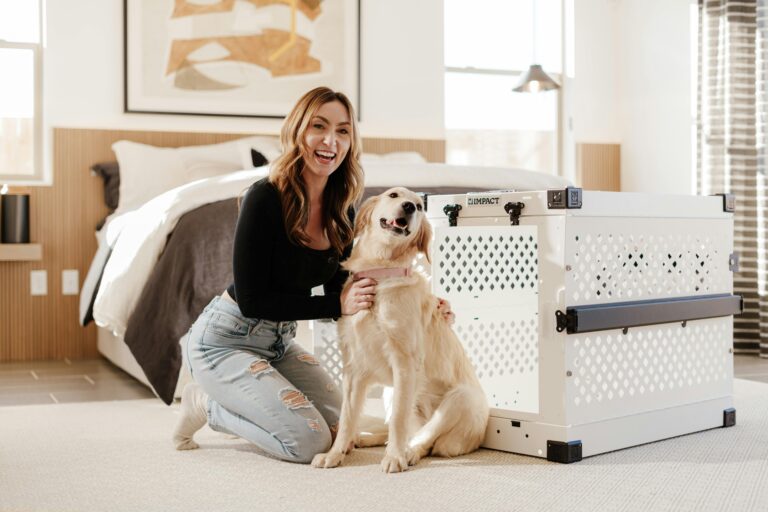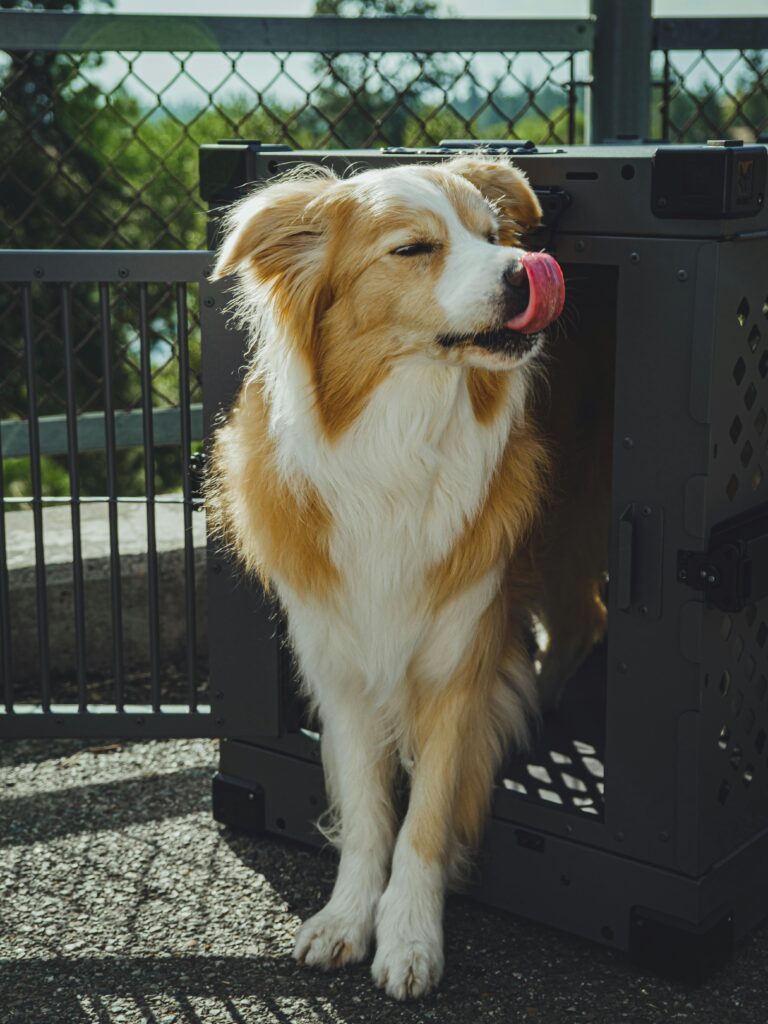The Truth About Crate Training
When I talk with new clients about crate training, I often hear the same concern: “I don’t want my dog to think I’m punishing them.” It’s a common misconception, but when used correctly, a crate is not punishment. In fact, it can be one of the most valuable tools you can give your dog.
Dogs are den animals by nature. They crave a safe, quiet space to rest and reset. A crate provides exactly that: a consistent place where your dog can relax without the stress of constant stimulation.
Let’s break down why crate training is so effective, how to avoid common mistakes, and how to introduce it in a way that makes your dog love their crate.
Why Crate Training Benefits Your Dog
A properly trained dog views the crate as a safe space, not a prison. Crate training provides structure that supports both behavior and well-being.
Benefits include:
- Housebreaking: Dogs are less likely to soil where they sleep.
- Safety: Prevents chewing on furniture, electrical cords, or harmful items when unsupervised.
- Routine building: Creates predictability in your dog’s daily life.
- Calmness: Teaches self-soothing and prevents overexcitement.
- Travel ease: Dogs comfortable in crates adjust better to car rides or vet visits.
How to Introduce the Crate the Right Way
The key is to make the crate a positive experience from day one. Never use it as punishment.
Step-by-step introduction:
- Place the crate in a quiet but social area, such as a living room corner.
- Add comfortable bedding and a toy or two.
- Let your dog explore the crate freely without forcing them inside.
- Use treats or meals to create positive associations with entering.
- Begin with short, calm crate times and slowly increase the duration.
Over time, your dog will choose the crate on their own when they want to rest.
Common Mistakes to Avoid
Many frustrations with crate training come from misuse. Avoid these common pitfalls:
- Using the crate as punishment for bad behavior
- Leaving the dog crated too long without breaks
- Ignoring whining or barking that signals real needs
- Placing the crate in a noisy or stressful area
When the crate is introduced properly, it becomes a tool for confidence, not fear.
Using the Crate for Everyday Training
The crate can support more than just rest. It helps with impulse control and calmness. For example, teaching your dog to go into their crate on command can be as effective as a “place” command during busy times at home.
Our blog on The Fastest Way to Improve Your Dog’s Behavior at Home also shows how structure and boundaries speed up training results, crate use fits perfectly into this approach.
If your dog struggles with consistency in multiple areas, pairing crate use with a structured obedience program is a game changer. Our Basic Obedience Program gives you the foundation to combine crate training with reliable commands like “place,” “down,” and “stay.”
When to Seek Professional Guidance
If your dog barks excessively in the crate, panics, or shows signs of severe anxiety, don’t give up. These issues can usually be solved with professional help and a clear plan.
Our trainers at Off Leash K9 Training West Virginia work with families to create crate training strategies that fit each dog’s temperament and needs. From puppies learning housebreaking to adult dogs overcoming anxiety, we help turn the crate into a trusted tool.
For additional perspective, PetMD provides a helpful article on crate training puppies with tips to make the process smoother.
Checklist Review: Crate Training Do’s and Don’ts
- Do introduce the crate gradually and positively
- Do use the crate for structure, calmness, and safety
- Don’t use the crate as punishment
- Don’t leave your dog inside for unreasonably long stretches
- Do combine crate training with obedience routines
- Don’t ignore anxiety issues, address them with proper training
Crates Build Confidence, Not Fear
When done correctly, crate training provides your dog with comfort, structure, and calmness. It’s not about punishment. It’s about giving your dog their own safe space where they can thrive.
If you’re struggling with crate training or want to make sure you’re doing it right, our professional trainers can help.
Contact us today to schedule a consultation and give your dog the safe space they deserve.


